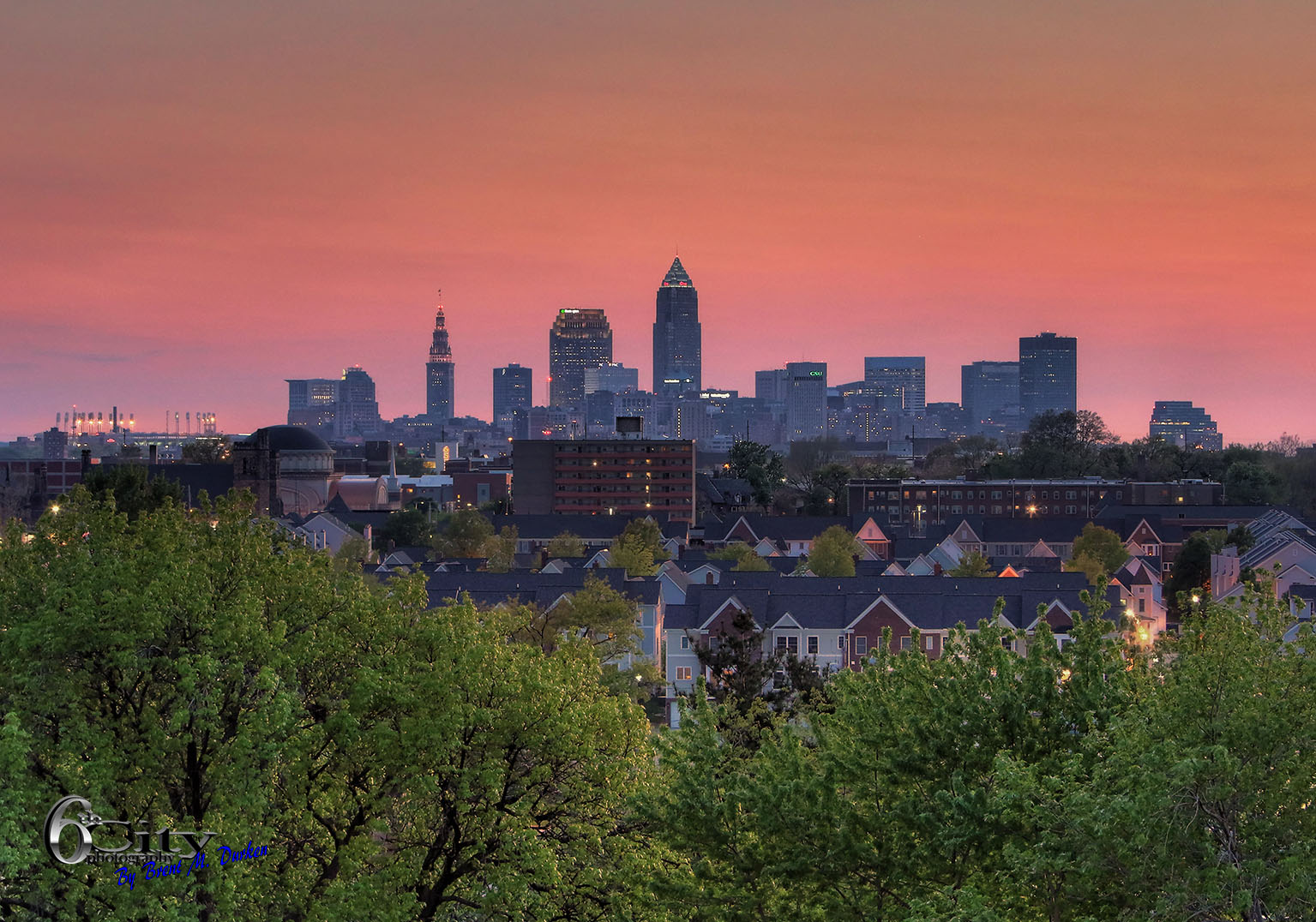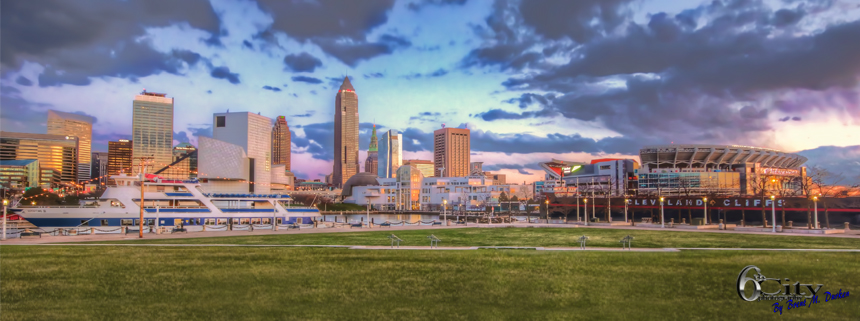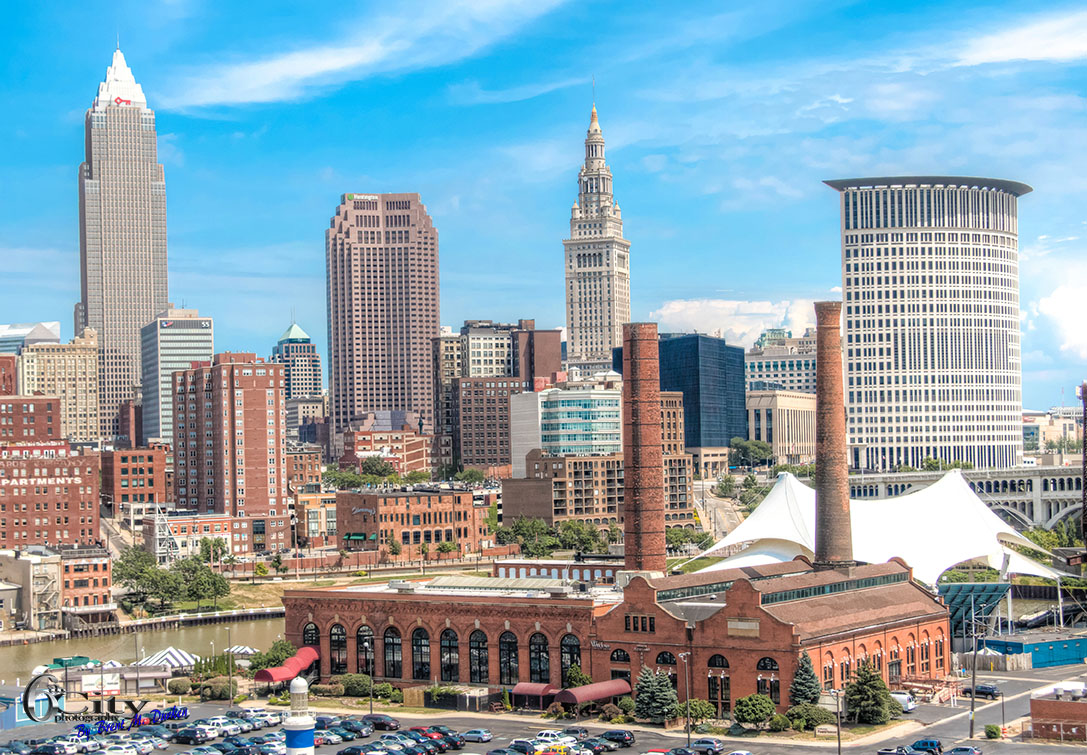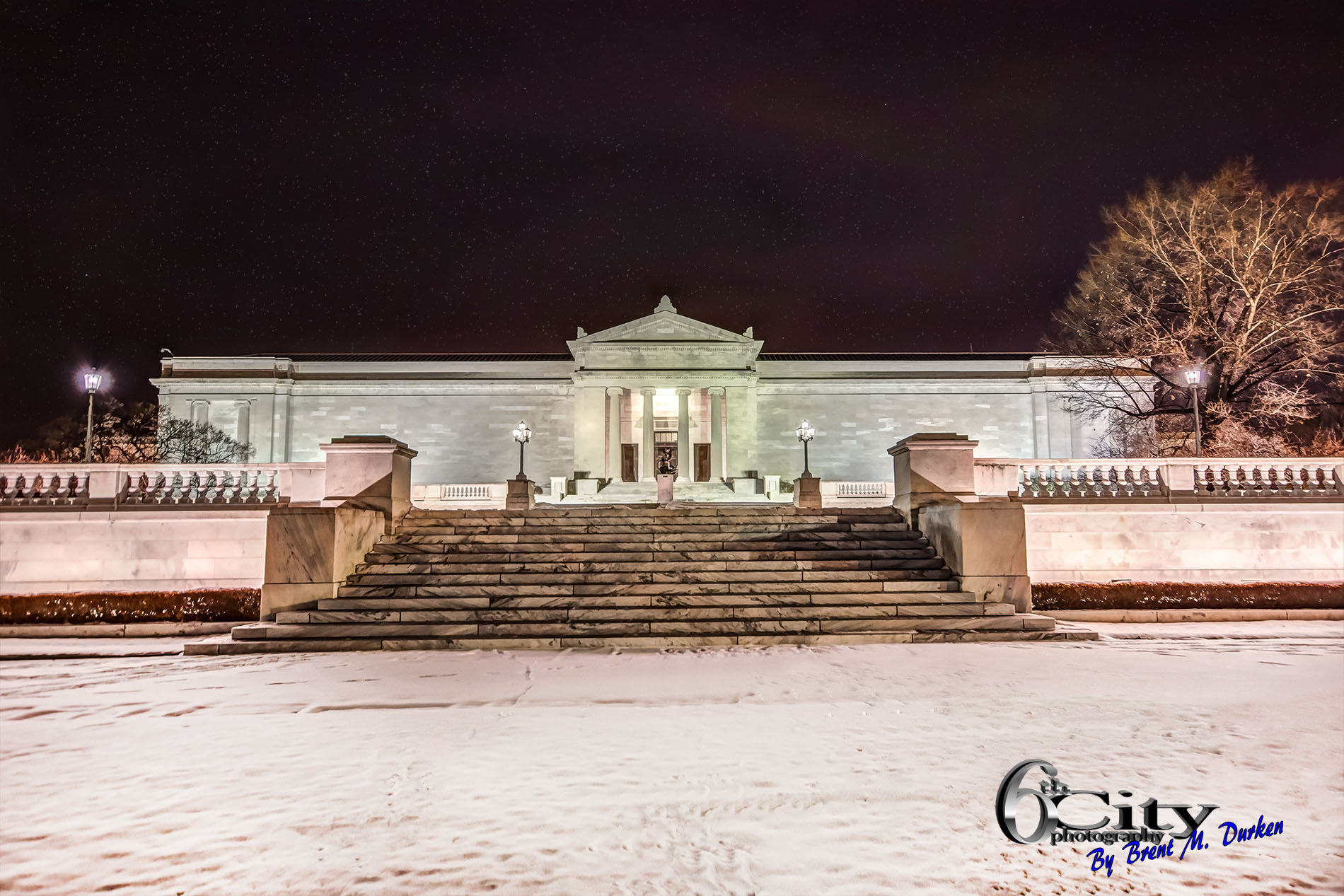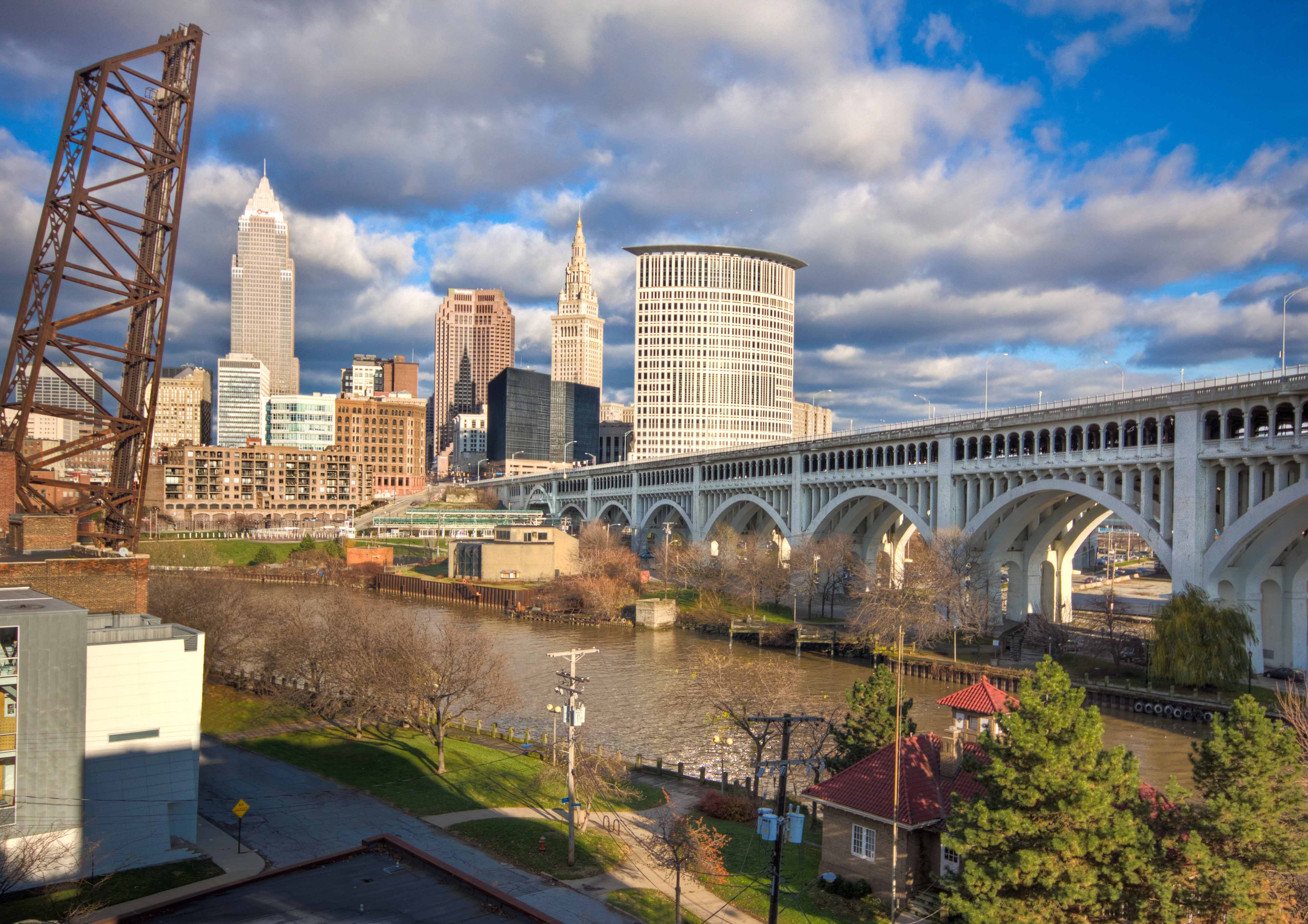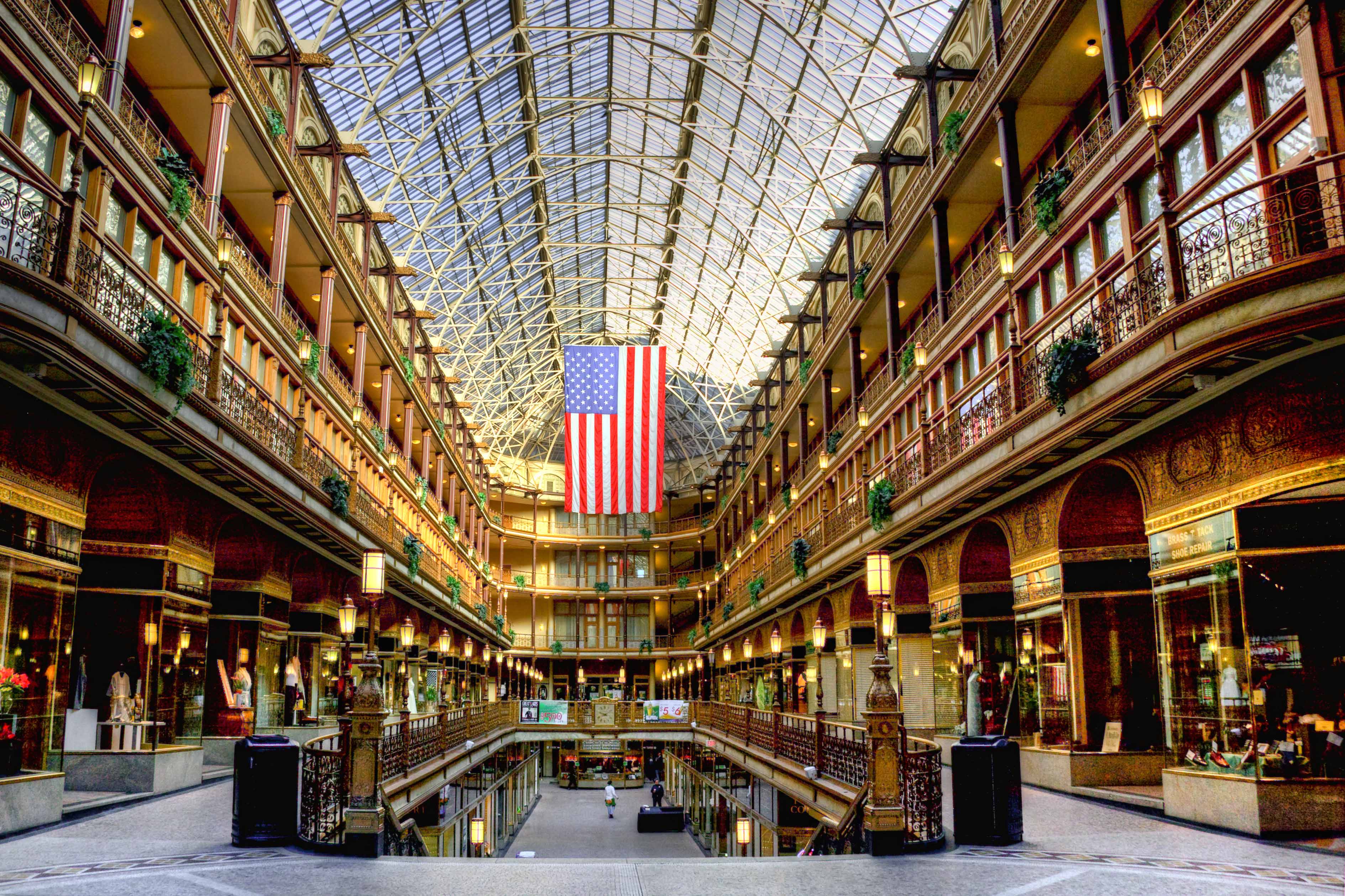Panoramic Cleveland Skyline
Panoramic view of the Cleveland Skyline from Voinovich Bicentennial Park in the North Coast Harbor.
All photos are copyright of Brent Durken – www.brentdurken.com
To purchase a digital download of this photo for your website or blog please visit: https://www.smugmug.com/gallery/n-zRG6xB/
Purchase a print of this photo: Brent Durken Print Sales
Cleveland’s Skyline, the Powerhouse and the Nautica Entertainment Complex
Today’s photo features the Powerhouse “Nautica Entertainment Complex” with the Cleveland skyline as a backdrop. The Powerhouse was built in 1892 on the west bank of the Cuyahoga River by Marcus Hanna to power Cleveland’s west side streetcar lines. The powerhouse, which is now a National Historic Landmark was closed in 1920. Streetcars were being used less due to the rise of the automobile.
Today the Nautica Entertainment Complex includes the Powerhouse and is home to the Greater Cleveland Aquarium, Windows on the River banquet facilities and Trolley Tours, the Sugar Warehouse with Shooters on the Water, the IMPROV Comedy Club and Restaurant, Great Lakes Watersports, Jacobs Pavilion, the Nautica Queen dining and cruise ship, and the Apartments at Nautica building with McCarthy’s Downtown.
To find more about this amazing venue: http://www.nauticaflats.com/
All photos are copyright of Brent Durken – www.brentdurken.com
To purchase a digital download of this photo for your website or blog please visit: https://www.smugmug.com/gallery/n-zRG6xB/
Purchase a print of this photo: Brent Durken Print Sales
Cleveland Museum of Art
The Cleveland Museum of Art is truly a treasure here in Northeast Ohio. This world-class museum is free and open all year for families to enjoy. Here is more about the museum from the Cleveland Museum of Art website: “The museum opened on June 6, 1916, after many years of planning. Its creation was made possible by Cleveland industrialists Hinman B. Hurlbut, John Huntington, and Horace Kelley, all of whom bequeathed money specifically for an art museum, as well as by Jeptha H. Wade II, whose Wade Park property was donated for the site. The endowments established by these founders continue to support the museum. The original neoclassic building of white Georgian marble was designed by the Cleveland firm of Hubbell & Benes and was constructed at a cost of $1.25 million. Located north of the Wade Lagoon, it forms the focus of the city’s Fine Arts Garden.
Establishing Programs for Children and Adults
Frederic Allen Whiting was the museum’s first director from 1913 to 1930. An authority on handicrafts, he believed in the museum as an educational institution. Under his leadership, the museum established the education department and a wide variety of programs for children and adults. In 1919 the first “Annual Exhibition of Cleveland Artists & Craftsmen” was held. This exhibition soon became known as the May Show, and continued to showcase local artists for 73 years.
Securing an International Reputation
William M. Milliken served as the museum’s second director from 1930 to 1958. During his tenure the museum continued to prosper, particularly during the 1940s and 1950s, when a series of large bequests, including the Rogers Bequest and the Severance Fund, allowed the purchase of significant works that established the museum’s international reputation.
Three important milestones occurred in 1958. On March 4 the first major addition doubled the size of the museum. During the year the museum also received a sizable bequest from Leonard Hanna Jr., which provided the funds necessary to function in the mainstream of national and international art collecting. Dr. Sherman Emery Lee became the museum’s third director. Lee would be known for his long tenure in the director’s role and the development of the museum’s Asian collection, which ranks as one of the finest in the country. During his directorship another wing, developed by signature architect Marcel Breuer, opened in 1971. It contained special exhibition galleries, classrooms, lecture halls, Gartner Auditorium, and the headquarters of the education department.
Expanding the Collections
In 1983 Dr. Evan Hopkins Turner became the fourth director. Another addition to the museum opened during his tenure. It contained the museum’s extensive library, as well as nine new galleries. Turner’s legacy includes the expansion of the photography and modern art collections and the reinstallation of permanent galleries. He also established the museum’s community-centered focus to ensure the institution’s relevancy to its audiences.
Enhancing Community Connections
Turner’s community-centered outlook continued under the directorship of Dr. Robert P. Bergman, who served from July 1993 until May 1999. A specialist in the art of the European Middle Ages, Dr. Bergman established community advisory committees to act as consultants for exhibitions and programs. Upon the untimely death of Dr. Bergman, deputy director Kate Sellers was appointed acting director and served from May 1999 until March 2000.
Advancing a Great Legacy
On March 13, 2000, Katharine Lee Reid, the daughter of former director Sherman Lee, became the museum’s sixth director. Her special interests included 17th-century European paintings, 20th-century painting and sculpture, and late 19th- and 20th-century American and European decorative arts. Under her tenure, ground was broken for the Rafael Viñoly-designed renovation and expansion of the entire museum complex. Mrs. Reid retired in 2005.
Building for the Future
Succeeding Katharine Lee Reid in April 2006, Timothy Rub became the seventh director of the museum. With a background in architecture and modern and contemporary art, Mr. Rub brought 20 years of museum experience to Cleveland. The museum’s renovation and expansion project continued under Mr. Rub, with the renovated 1916 Beaux-Arts building reopening in June 2008 and the new east wing in June 2009. Mr. Rub resigned as director in September 2009 to become director of the Philadelphia Museum of Art. Deborah Gribbon, a former director of the J. Paul Getty Museum, served as interim director until September 2010.
David Franklin, an internationally respected scholar of Italian Renaissance and baroque art, was the museum’s ninth director; his term ended in October 2013. Fred Bidwell, the retired executive chairman of JWT/OgilvyAction, a national advertising agency serving leading brands with more than 500 employees, served as the museum’s interim director.
William M. Griswold was named the tenth director of the museum in May 2014, and is currently leading the museum as it approches its centennial anniversary”.
Make sure to check out more about this amazing museum here: http://www.clevelandart.org/
Purchase this photo: Brent Durken Print Sales
Squires Castle in the Cleveland Metroparks
Squires Castle is an amazing place that reminds you of a bygone era in Cleveland history. Great place to take photographs and to take the kids to explore. Information on Squires Castle from the The Encyclopedia of Cleveland History : “Squires Castle is a picturesque castellated and turreted ruin on Chagrin River Rd. in the N. Chagrin Reservation of the Cleveland Metroparks. The irregular stone structure was originally built as part of the estate of Feargus B. Squire (1850-1932), vice-president and general manager of the Standard Oil Co. (OHIO) until 1909. Attracted by the beauty of the Chagrin Valley, Squire purchased 525 acres there in the 1890s. He engaged a New York architect and planned 2 buildings in the style of English or German baronial halls. The existing structure was erected to serve as a gatehouse and caretaker’s quarters, and the estate was improved with groves of trees, ponds, bridges, and miles of gravel roadway. The main residence was never built, and Squire built his principal home in Wickliffe. In 1922 the property was sold to a private land developer, and it was acquired by the Metropolitan Park Board in 1925 as the beginning of the N. Chagrin Reservation. Seriously vandalized and deteriorated, the gatehouse is now only a shell consisting of the stone and brick walls. Popularly known as “Squire’s Castle,” it is used as a shelterhouse and picnic area by park visitors. Renovations in 1995 included painting the ground floor of the castle with a waxed coating to deter vandalism”. Read more about Cleveland’s amazing history: http://ech.cwru.edu/
For Directions to Squires Castle follow this link: https://goo.gl/maps/ahPx9VVfndM2
Purchase this photo: Brent Durken Print Sales
http://brent-durken.pixels.com/
Cleveland’s North Coast Harbor
This weeks photo blog features Cleveland’s North Coast Harbor on a warm spring day. North Coast Harbor is home to amazing venues such as the Rock and Roll Hall of Fame and Museum, FirstEnergy Stadium, USS Cod, Burke Lakefront Airport,the Great Lakes Science Center, Voinovich Bicentennial Park and the William G. Mather Maritime Museum. The harbor has be recently renovated and it is now possible to dock your personal watercraft or rent jet skis or kayaks.
Purchase this photo: Brent Durken Print Sales
http://brent-durken.pixels.com/
A classic view of the Cleveland Skyline
 Its been quite a while since my last blog post and I am going to attempt to be better at sharing new photos on here this year. I thought that I would get the year started off with a classic view of the Cleveland skyline. This Cleveland skyline photo was taken from Heritage Park near the Center St. swing bridge in the Cleveland Flats. Its a very popular location for photographing the Cleveland skyline because of the great view of the Terminal Tower, Key Bank Building and 200 Public Square (Huntington Bank). Another reason this location is so popular is the great reflections of the city and Veterans Memorial bridge.
Its been quite a while since my last blog post and I am going to attempt to be better at sharing new photos on here this year. I thought that I would get the year started off with a classic view of the Cleveland skyline. This Cleveland skyline photo was taken from Heritage Park near the Center St. swing bridge in the Cleveland Flats. Its a very popular location for photographing the Cleveland skyline because of the great view of the Terminal Tower, Key Bank Building and 200 Public Square (Huntington Bank). Another reason this location is so popular is the great reflections of the city and Veterans Memorial bridge.
Purchase this photo: Brent Durken Print Sales
http://brent-durken.pixels.com/
The William G Mather Museum in Cleveland
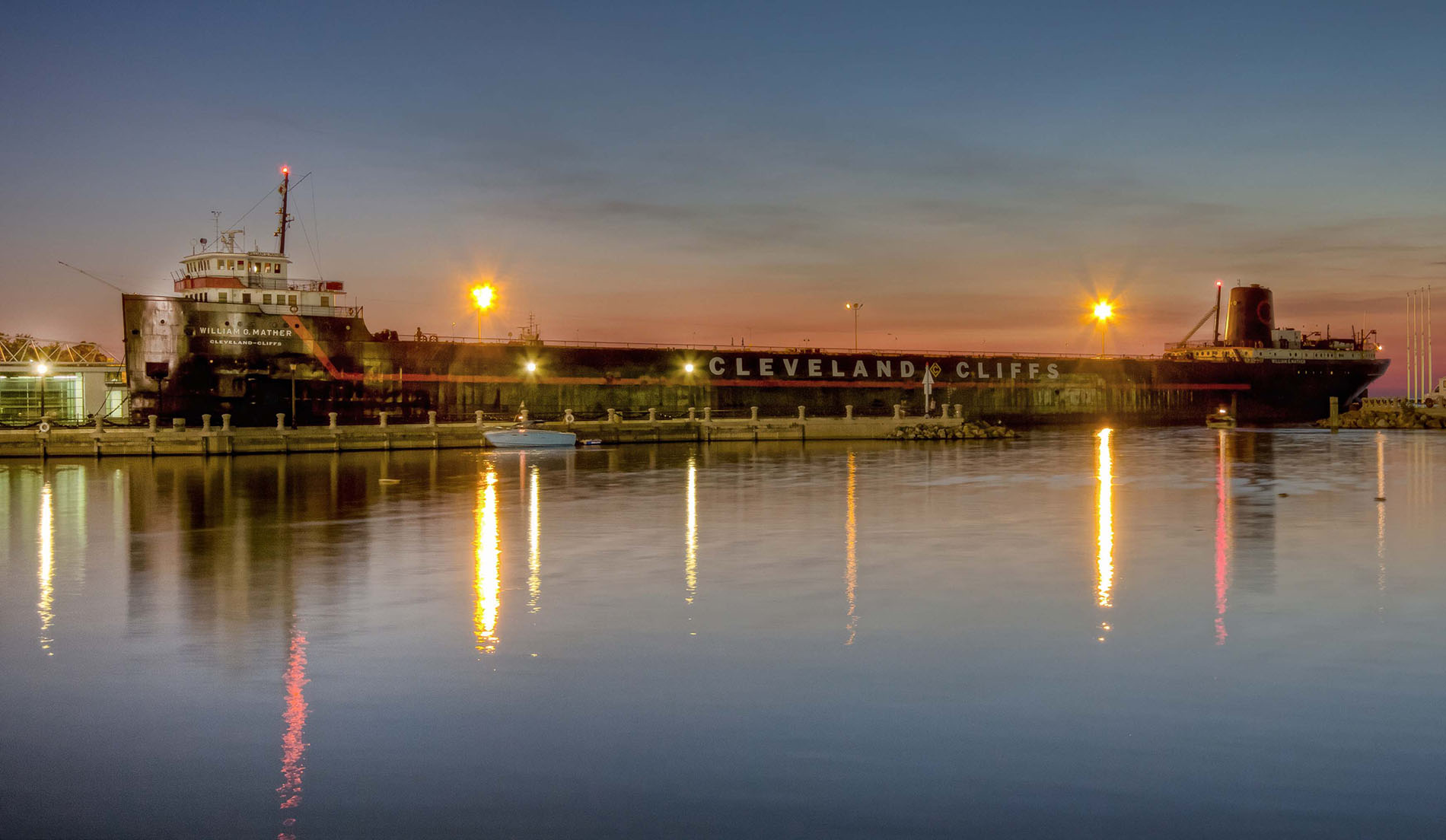
“The Steamship William G. Mather is a retired Great Lakes bulk freighter now restored as a museum ship in Cleveland, Ohio, one of four in the Great Lakes region. She transported cargo such as ore, coal, stone, and grain to ports throughout the Great Lakes, and was nicknamed “The Ship That Built Cleveland” because Cleveland’s steel mills were a frequent destination.”
Purchase this photo here: Brent Durken Print Sales
http://brent-durken.pixels.com/
Cleveland Skyline
Today’s Photo: Cleveland Skyline from the Viaduct
Today’s Cleveland photo was taken from the old Superior Rd. Viaduct near the Stonebridge Waterfront Apartments. I really love the way the city looks from this vantage point.
Today’s Quote: It’s really kind of hard to be a suburb of nothing. If you don’t have a downtown, you really don’t have anything. It’s hard to build a community around parking lots and subdivisions – Ed McMahon
The Cleveland Arcade
Today’s Photo: The Arcade
From the Arcade website:
In May of 1890, The Arcade opened its doors as one of the first indoor shopping centers in America. It was designed as a big-city mercantile enter by John M. Eisenmann and George H. Smith who modeled it after the Galleria Vittorio Emanuele II in Milan, Italy. The cost to construct The Arcade was $875,000 then, and was financed by many of Cleveland’s most esteemed businessmen of the late 19th century—among them: John D. Rockefeller, Steven V. Harkness, Louis Severance, Charles Brush and Marcus Hanna. Rockefeller and Harkness are featured on gold emblems on the Arcade’s Euclid Avenue exterior.
Once known as Cleveland’s Crystal Palace The Arcade has always been one of Cleveland’s best-known landmarks. For more than 100 years, The Arcade offered unique shops, services and restaurants among the five indoor balconies and offices in the two ten-story towers. The Arcade was the first building in Cleveland and the ninth in the country to be placed on the National Register of Historic Places.
For more info:
http://theclevelandarcade.com/content/history
Purchase this photo: Brent Durken Print Sales
http://brent-durken.pixels.com/
Today’s Quote:
Money, not morality, is the principle commerce of civilized nations – Thomas Jefferson
